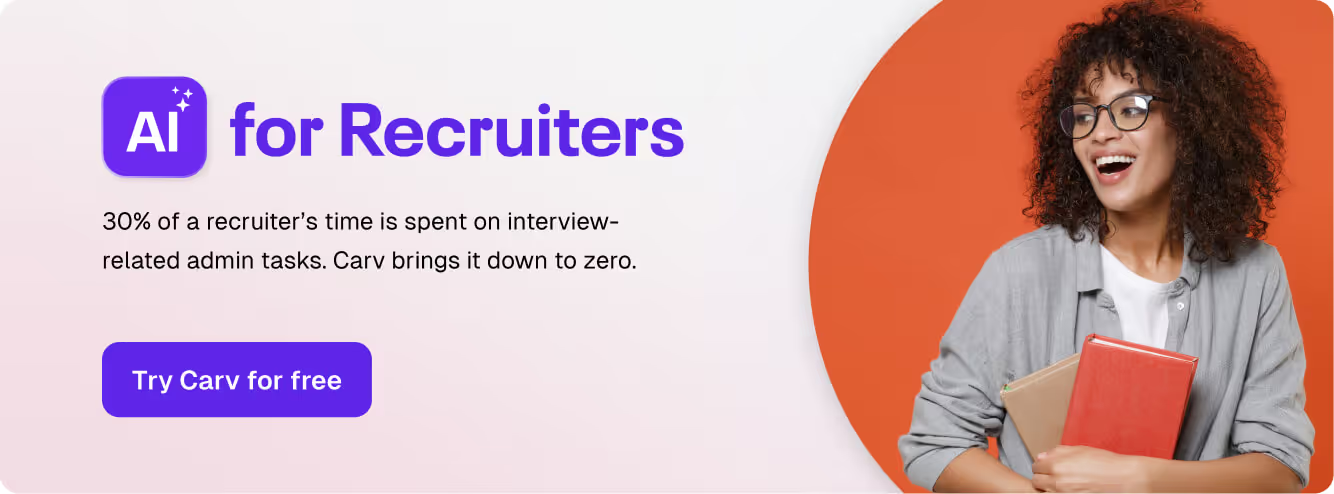After a rollercoaster ride of the past few years, 2024 is already shaping up to be much steadier for the staffing industry. Inflation is falling, interest rates are stabilizing, and the economy is starting to recover—which signals to recruiters that businesses are growing again.
However, that growth will be approached cautiously.
Generally, we’re seeing hiring trends in 2024 reflect the need for flexibility, as businesses still feel they need to prepare for an unpredictable labor market. A surge in demand for temporary workers and the continued rise in remote work adoption are both proof of this.
But regardless of how the hiring market is swinging, it's crucial to keep an eye on key staffing industry benchmarks to gain a reliable picture of your staffing company’s performance and identify areas for improvement.
So let’s dive in.
Staffing market size and growth benchmarks
After a few years of slow hiring activity due to economic instability, you’ll be pleased to know that all signs are pointing towards positive growth for the staffing industry.
Some staffing leaders are speaking about 2024 as a year of “cautious growth,” and the numbers certainly support this.
Revenue generated by the staffing industry in 2024 (global)
The Staffing Industry Analysts (SIA) estimates that the global staffing market will be worth something in the region of $665 billion worldwide in 2024 - a 2% growth on 2022.
Predicted growth of the US staffing industry in 2024
The American Staffing Association (ASA) predicts 2.4% revenue growth for the US staffing industry in 2024, which could see it reach an estimated $216.9 billion for the US alone.
91% of staffing agencies expect to grow this year, with 78% expecting as much as 10-30% growth.
Growth of the temporary/contract hiring market
It’s been estimated that the temporary/contract segment of the staffing industry will account for 89% of the entire US recruitment market in 2024, while permanent placements will generate only around 11%.
The temp staffing market in the US is predicted by the PGC to grow 2% in 2024.
YoY revenue growth projected for the temporary staffing sector by industry for 2024 (US):
- IT - 5%
- Finance - 4%
- Life sciences - 5%
- Marketing - 5%
- Education - 7%
- Engineering - 8%
Industry employment benchmarks
In the US alone, the temporary staffing industry employs nearly 3 million temporary and contract workers in an average week. Over 14.5 million temporary workers are hired annually through staffing companies.
Pre-pandemic, there were about 25,000 staffing and recruiting companies, with 56% operating in the temporary and contract staffing sector.
These staffing firms primarily fill positions in industrial jobs (36%), followed by office roles (24%) and professional-managerial positions (21%).
Interestingly, 73% of staffing employees work full-time, comparable to the overall workforce (75%). Six in ten staffing employees (64%) choose this type of work to bridge gaps between permanent jobs or as a stepping stone to secure a full-time position.
Talent acquisition and recruitment benchmarks
Recruitment metrics that are related to KPIs vary broadly from one staffing agency to the next. But they also vary depending on other factors, like the industry you're recruiting in and whether you’re focussed on temporary or permanent placements.
However, there are a few general benchmark recruitment metrics worth paying attention to in 2024.
Average time-to-fill for open positions
Industry average time-to-fill varies broadly depending on the role, but for permanent positions, 45 days is considered competitive.
- For professional temp staffing roles, the typical time-to-fill rate (from when a candidate accepts an offer to when they start the job) is around 14 days days, with a 40% fill rate.
- For commercial staffing roles like light industrial or call center jobs, the median time-to-fill from is shorter, at around 4-5 days.
Source of hire success rates
- Job boards - Job boards are becoming less effective, with a 13% drop in candidate usage while job board costs have gone up 300%.
- Referrals - Employee referrals remain one of the top sources for quality hires. Companies can expand their talent pool x10 by recruiting through their employees' networks.
- Social media - The social channels that source the highest quality candidates are: 1) LinkedIn (53%), 2) Facebook (33%), 3) YouTube (22%), 4) Instagram (20%), 5) Twitter (2%).
Cost per hire
The average cost-per-hire in the staffing industry (including agency fees and internal costs) is around $4,700 according to data from the Society for Human Resource Management (SHRM).
Average number of resumes received per open position
On average, a corporate role will receive 250 applications for each open vacancy. The average applicant-to-interview ratio is 2%. With this in mind, you can expect around 5 interview candidates for every 250 applications you receive.
Workforce management benchmarks
There’s a tendency in the staffing industry to think that once your candidates are placed, your job as a recruiter is done. But this certainly isn’t the case.
It’s important to pay attention to what happens to your placed candidates once they’re on the job, as this will tell you a lot about whether you’re placing them in the right roles.
Average placement duration for temporary and contract workers
The average tenure for contract staffing employment was 10 weeks in 2022.
Employee turnover rates within the staffing industry
According to an American Staffing Association (ASA) survey, the turnover rate for temporary and contract employees is 419%.
Client satisfaction with regards to staffing agency services
The average NPS for HR service providers was 8.35 in 2023, which translates to 46%, according to ClearlyRated. This ranks among the highest scores in B2B services, with the leading industries being B2B software (50%) and engineering service providers (47%).
For the Staffing and Recruitment industry, the net promoter score was 36% in 2023, up 5% from 2022. As for the placed candidate satisfaction, the NPS was 30% in 2023, up 4% from 2022.
Recruitment technology adoption benchmarks
Both inside and outside of recruitment, one thing’s for sure: 2024 is the year everyone starts leveraging AI technology.
Here are some key metrics that tell us a bit about where we are now with AI adoption in recruitment and what it might look like in the near future.
Utilization rates of AI-powered recruitment tools
Between 35-45% of businesses were already using AI in their recruitment process in 2023, so it’s highly likely that this percentage will be much higher in 2024.
A huge 99% of Fortune 500 businesses are using AI technology to recruit candidates.
Use of automation in various aspects of the staffing process
There are lots of ways businesses are now using AI to automate the recruitment process. For example;
- Around 60% of organizations now use AI to support with talent management.
- 81% of companies use AI for screening.
- 60% of companies use AI automation for interviewing across all positions.
- 50% of hiring businesses use AI to evaluate candidates.
Investment in AI tools by staffing agencies
More than half (55%) of staffing firms were using AI tools in their recruitment process last year, and those who used AI saw a 31% increase in revenue.
How to use staffing benchmarks to improve hiring
Now that you have your staffing industry benchmark data, how do you go about using the numbers to improve performance at your agency? Follow these steps to make the most of these recruitment industry metrics.
Step 1: Identify areas where your agency falls short
Looking at the industry benchmarks in this article - how does your agency compare?
By taking a close look at your company’s recruitment metrics and comparing them to industry averages, you’ll be able to see clearly where your business is lagging behind your competitors.
Step 2: Set realistic goals based on industry averages
Use the staffing industry benchmarks from the previous section to pull together some achievable targets you can aim to hit in 2024.
The emphasis here is to focus on what’s actually achievable for your agency. If your revenue has been falling 6% for the last two years but you see the current revenue growth benchmark is 2.4% for staffing agencies in the US, it makes no sense to aim for 2.4% growth for your agency. Work with your team towards numbers you can realistically reach.
Also, focusing on the benchmarks where you can make a more tangible impact will be much more beneficial for your business. For example, creating a team goal to improve KPIs like time-to-fill and placement duration will be much more beneficial than focusing too much on broad, overarching growth benchmarks like revenue growth.
It’s also worth thinking about the benchmarks that will naturally have a knock-on effect on other recruitment metrics within your agency. Which takes us nicely to step 3…
Step 3: Implement new technologies to improve efficiency
Increasing your investment in AI technology is guaranteed to have a positive effect on your team’s monthly recruitment KPIs. AI recruitment technology speeds up the hiring process, ensures better-fit placements and can cut out as much as 30% of the admin work that comes with hiring.
The impact of this is that businesses using AI for recruitment report a 31% increase in company revenue. Start implementing AI tools like Carv at your staffing agency and you’ll quickly see the positive impact AI recruitment has on your team’s performance metrics.
By letting Carv handle the admin work associated with candidate interviews and intakes, you free up recruiter time to focus on building loyal relationships with candidates and making the right hiring decisions.
Generative AI and machine learning is already helping staffing agencies make more accurate and efficient hiring decisions faster. If you’re going to grow in 2024, you’re going to need to embrace technology to overcome hiring challenges and stay ahead of the curve.
Start improving your numbers today
Clearly, the benchmark data is suggesting that the staffing industry is set for positive growth this year - particularly where it comes to the temporary and contract sector.
And as AI technology continues to impact every area of our lives, we’ll start to see the impact of a surge in AI recruitment tool adoption too – so who knows what the numbers will look like next year?
With a lot of change on the horizon, it’s crucial you stay informed about staffing industry trends so that you can adapt your strategies in response. And the more attention you pay, the faster you can respond, which is guaranteed to put you well ahead of competing agencies.
See how Carv can help you achieve results that are well above the industry average by automating the admin so your recruiters can focus on providing excellent service to every candidate.



.avif)



%20(1).avif)
.avif)